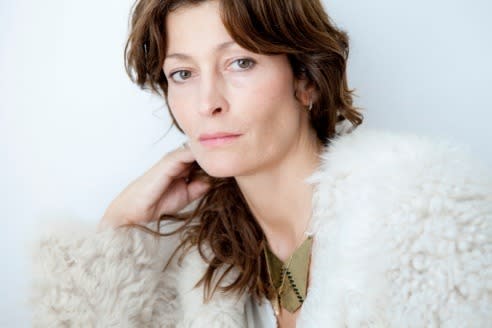Jane Mayle, the Cult Indie Designer of the Aughties, Is Back

Photo: Courtesy of Gerald Forster
In fashion, like most everywhere else, there are things that you come to accept as gospel, self-evident truths, that even if you think hard enough, you’re not able to figure out where you learned them. Like the way you always knew David Bowie was a genius — musical and sartorial.
And the way you always knew that back in the early aughts the cool girls of the world all lived and died for their Mayle dresses. And not just any cool girls, but women like PJ Harvey, Kim Gordon, and Liv Tyler. The label, founded in 1998, shut down just 10 years later, after what’s now probably known as “fashion fatigue.” Jane Mayle’s lease on her iconic Nolita store was up, and it was a catalyst for her to check out of an industry that increasingly asked more of its creatives. In the following years, she hosted pop-up shops and collaborated with Club Monaco, but in the end it was her own customers’ loyalty that brought her back to where it all started.
“I would be stopped on the street by people,” Mayle says on a snowy morning, sitting in a cozy nook in her fifth-floor walkup apartment in Chelsea, where she’s showing her collection to the press, “and I’d think, How do you know it’s me? And people would say things like, ‘This bag I’m wearing I’ve had for eight years,’ and, ‘Oh, I’ve been trolling eBay for this and that!’ It’s amazing to me that fashion, as accelerated as it has become, still [has a] place where people remember what I did and still love it, so it was time to give them more.”
And, oh, is there ever more! The collection, relatively small for today’s standard everything-to-everyone approach, will feature a delivery of 25 to 30 pieces — “exactly the right amount of pieces a woman will need in her wardrobe” — plus bags and accessories. There are silk lingerie-inspired slip dresses, the perfect high-waist wide-leg flared jeans, and a blouse with a scarf detail at the sleeve that left more than a few editors gagging.
“Originally, I was intending to come back with accessories — footwear and jewelry,” she says, “and I started thinking, Who am I right now? What woman would buy these [bags], and how would she dress? It was a very helpful way of focusing the clothes. Then I went through my archives with that in mind.”
The archives are a big focus of the collection. Things have been “recast and re-contextualized,” fabrics redone in new colors, dresses redone in new materials, a piece from 1999 living with a piece from 2003. “I think it helps to work from archives and classics,” Mayle says. And the result is very organic — not in a hippie way, but in the way that only a woman who designs for herself, with her real-world needs in mind, can create. “It’s not about reinventing the wheel; it’s about giving a woman more of what she wants, [the things] that work for her, and that just slots in with the things she owns already.”

A look from Jane Mayle’s A/W 2016 lookbook. (Photo: Courtesy of Maison Mayle)
“The things I had of mine that had made it through the seven or eight years of not doing [the line] were … threadbare, so it was time to re-up my wardrobe,” Mayle says. And that personal connection to the collection can be seen, in the black button-down flared skirt available in wool and leather that you know you can buy because it will be your go-to skirt, the one that people will always compliment you on, and especially in the jewelry, single and mismatched earrings in gold with bright red details, signet rings with Mayle’s signature cameo design hammered into the metal, which I tried on and already it looked like something I had owned for years, something I would’ve picked up “in a little flea market in Portugal,” except I hadn’t and now suddenly it’s all I can think about.
But can a designer who felt the pace was already too fast a decade ago, before Instagram and Snapchat and blogs and the rest of the developments currently causing a fashion apocalypse, exist within today’s brutal landscape? “I think there’d always been a reluctance [to come back], because I know about the pace and the life I had [before], but I really can’t help myself,” Mayle says before she starts laughing. “Who was I kidding? I had fabric in storage, I bought furniture for a shop, so if it wasn’t going to have clothes in it, what was it going to have? I’ve been lying to myself, but quite pleasantly. But I needed the clothes, and I hope other people do too.”
Judging by the response of Barneys, who will be her main retailer, alongside smaller specialty stores around the world, this time it will be for keeps. “Barneys received me with open arms to the point where I received pitches from old lookbooks,” Mayle laughs. “They’re like, ‘What about this top? Can you do this top again?”
“I’ve had time to ponder and wonder what this could be like in a new incarnation,” she adds, “and I feel like the customer has had time to realize how much they’ve counted on the pieces in the past and how they’ve held up for them. For everyone else, it seems fashion is racing forward, but I’ve had lovely responses. I’m really, really lucky.” And so are we, who now have a label we can just go to and know that our wardrobes will be well taken care of.
Follow us on Instagram, Facebook, and Pinterest for nonstop inspiration delivered fresh to your feed, every day.

